Where: Various Locations
When: On afternoon in dull overcast weather, the light was very grey and sullen.
How: First of all I had to read the text a couple of times to fully understand the that I had to use the camera to take a “normal average” exposure and then take 2 photographs where the subject was underexposed and two photographs where the subject was overexposed. Each under and over exposure had to be done by a half of one stop and then one full stop. I first of all made sure that my camera was in aperture exposure so at the start of the exercise I could double check the aperture and speed settings before moving the camera into manual mode. I then took the shot and then changed the aperture setting on the camera up and down to get the under and over exposure settings.
I had a good think about the brief of this exercise as I have been reading Johan Wolfgang von Goethe – The Theory of Colours and Johannes Ittens – The elements of Colour as I had wanted to refresh myself on colour theory, something which I have not really approached since my school days in Art class.
I was expecting to see that the brightness of the colours in the images varied with the exposure setting but not the saturation.
I also decided that I would go beyond just photographing a single image with differing aperture settings that the exercise specified as I wanted to see if different colours behaved differently, so I chose four different subjects to see if I could easily spot the differences at processing and writing up time. From reading the above books I knew that depending on the background of the image that the colour would vary.
I decided to first of all shoot a primary colour and see what happened.
Red Jersey
One stop underexposed.
D80,Aperture f/10, Shutter Speed 1/400 sec, ISO 320, 300mm (35mm equivalent 450mm), Pattern Metering Mode, Auto White Balance, Manual Mode, Tripod Mounted, 70-300mm VR lens.

Half a Stop Underexposed
D80,Aperture f/9, Shutter Speed 1/400 sec, ISO 320, 300mm (35mm equivalent 450mm), Pattern Metering Mode, Auto White Balance, Manual, Tripod Mounted, 70-300mm VR lens.

Average Exposure
D80,Aperture f/8, Shutter Speed 1/400 sec, ISO 320, 300mm (35mm equivalent 450mm), Pattern Metering Mode, Auto White Balance, Manual, Tripod Mounted, 70-300mm VR lens.

Half a Stop Overexposed
D80,Aperture f/7.1, Shutter Speed 1/400 sec, ISO 320, 300mm (35mm equivalent 450mm), Pattern Metering Mode, Auto White Balance, Manual, Tripod Mounted, 70-300mm VR lens.
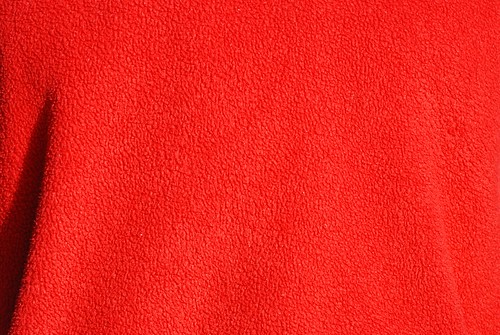
One Stop Overexposed
D80,Aperture f/6.3, Shutter Speed 1/400 sec, ISO 320, 300mm (35mm equivalent 450mm), Pattern Metering Mode, Auto White Balance, Manual, Tripod Mounted, 70-300mm VR lens.
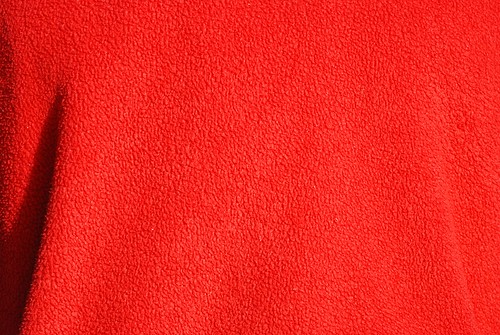
I then decided to shoot another primary colour which had a different hue and saturation level to it as I wanted to see if primary colours behaved in the same way when over and under exposed. I decided on the yellow grit bin as it was one of the brightest things in the surroundings
Yellow Grit Bin
One stop underexposed.
D80,Aperture f/10, Shutter Speed 1/200 sec, ISO 320, 140mm (35mm equivalent 210mm), Pattern Metering Mode, Auto White Balance, Manual Mode, Tripod Mounted, 70-300mm VR lens.

Half a Stop Underexposed
D80,Aperture f/9, Shutter Speed 1/200 sec, ISO 320, 140mm (35mm equivalent 210mm), Pattern Metering Mode, Auto White Balance, Manual, Tripod Mounted, 70-300mm VR lens.
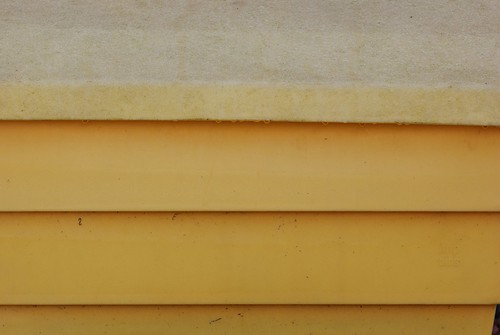
Average Exposure
D80,Aperture f/8, Shutter Speed 1/200 sec, ISO 320, 140mm (35mm equivalent 210mm), Pattern Metering Mode, Auto White Balance, Manual, Tripod Mounted, 70-300mm VR lens.
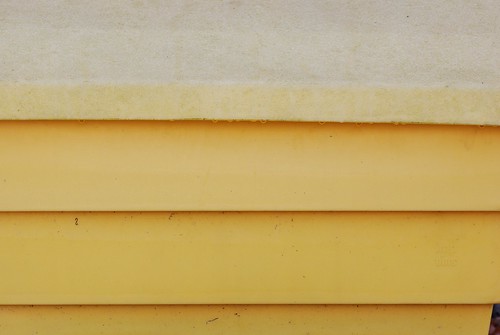
Half a Stop Overexposed
D80,Aperture f/7.1, Shutter Speed 1/200 sec, ISO 320, 140mm (35mm equivalent 210mm), Pattern Metering Mode, Auto White Balance, Manual, Tripod Mounted, 70-300mm VR lens.
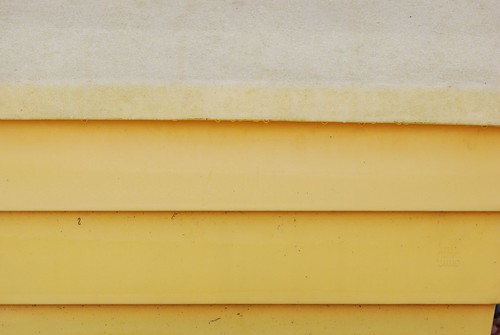
One Stop Overexposed
D80,Aperture f/6.3, Shutter Speed 1/200 sec, ISO 320, 140mm (35mm equivalent 210mm), Pattern Metering Mode, Auto White Balance, Manual, Tripod Mounted, 70-300mm VR lens.

I could see from the thumbnails of the images that the red example was slightly better defined in the range of colour due to the exposures, I could see that the colour became brighter but lost none of its saturation. The yellow example was a little harder to spot the differences.
I then decided to photograph an orange Physalis as I wanted to see what secondary colours would do under the same conditions. I was drawn to the Physalis as I knew that light penetrated the subject and it thought it may differ in brightness and saturation due to it being almost back light. I expected that the light coming through the subject due to its transparency would destroy most of the detail of the subject when overexposed.
Orange Physalis
One stop underexposed.
D80, Aperture f/18, Shutter, Speed 1/60 sec, ISO 320, 300mm (35mm equivalent 450mm), Pattern Metering Mode, Auto White Balance, Manual Mode, Tripod Mounted, 70-300mm VR lens.

Half a Stop Underexposed
D80, Aperture f/16, Shutter, Speed 1/60 sec, ISO 320, 300mm (35mm equivalent 450mm), Pattern Metering Mode, Auto White Balance, Manual, Tripod Mounted, 70-300mm VR lens.

Average Exposure
D80, Aperture f/14, Speed 1/60 sec, ISO 320, 300mm (35mm equivalent 450mm), Pattern Metering Mode, Auto White Balance, Manual, Tripod Mounted, 70-300mm VR lens.
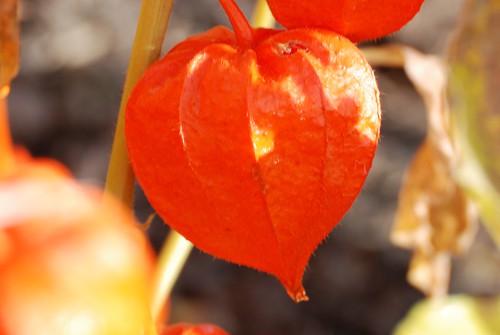
Half a Stop Overexposed
D80, Aperture f/13, Speed 1/60 sec , ISO 320, 300mm (35mm equivalent 450mm), Pattern Metering Mode, Auto White Balance, Manual, Tripod Mounted, 70-300mm VR lens.

One Stop Overexposed
D80, Aperture f/11, Speed 1/60 sec, ISO 320, 300mm (35mm equivalent 450mm), Pattern Metering Mode, Auto White Balance, Manual, Tripod Mounted, 70-300mm VR lens.
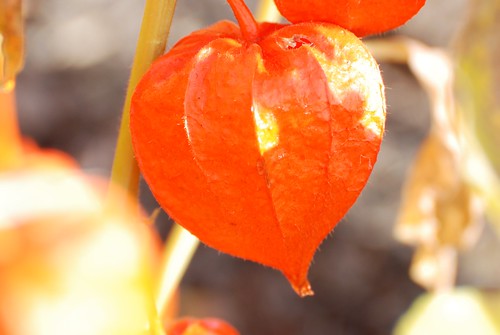
I was surprised to see that the back lighting of the subject did not make it become too washed out and loose all its detail when overexposed. I thought that it may have become lost in a bloom of orange white and I was very suprised to see that it retained details as well as some of its colour
Finally I wanted to see what would happen to white when under and over exposed, I wanted to see if the white would become grey when under exposed and when overexposed the subject would quickly lose all detail within one stop and become very bright and blown out.
One stop underexposed.
D80, Aperture f/29, Shutter, Speed 1/200 sec, ISO 320, 220mm (35mm equivalent 330mm), Pattern Metering Mode, Auto White Balance, Manual Mode, Tripod Mounted, 70-300mm VR lens.

Half a Stop Underexposed
D80, Aperture f/25, Shutter, Speed 1/200 sec, ISO 320, 220mm (35mm equivalent 330mm), Pattern Metering Mode, Auto White Balance, Manual, Tripod Mounted, 70-300mm VR lens.
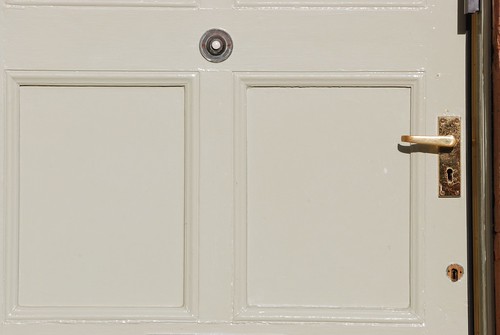
Average Exposure
D80, Aperture f/22, Speed 1/200 sec, ISO 320, 220mm (35mm equivalent 330mm), Pattern Metering Mode, Auto White Balance, Manual, Tripod Mounted, 70-300mm VR lens.
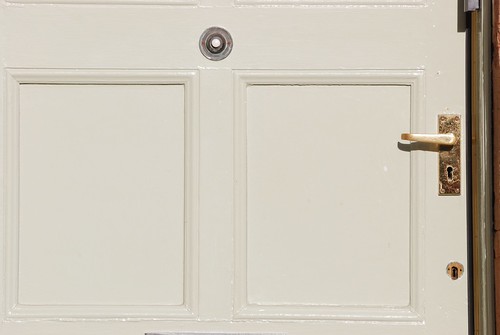
Half a Stop Overexposed
D80, Aperture f/18, Speed 1/200 sec, ISO 320, 220mm (35mm equivalent 330mm), Pattern Metering Mode, Auto White Balance, Manual, Tripod Mounted, 70-300mm VR lens.

One Stop Overexposed
D80, Aperture f/16, Speed 1/200 sec, ISO 320, 220mm (35mm equivalent 330mm), Pattern Metering Mode, Auto White Balance, Manual, Tripod Mounted, 70-300mm VR lens.

Again just looking across the thumbnails of the images I could quickly how much of a difference it made in the appearance of the colour just by choosing an exposure. I was suprised to see how much of a difference in the colour of a white door could be made to differ just through exposure.
As I was writing up this exercise I referred back to the notes paying attention to the examples for saturation and brightness as I did not want to confuse the two concepts as I had already made that mistake when I first looked at the range of colour from each selection of images that I had taken.
This was quite an interesting exercise; as it verified some of the points in the books I am reading, it also showed that the colour of a subject could be varied and influenced by under or overexposing the image. This means that the colour of a subject can be controlled to a certain extent by the camera and the photographer.
No comments:
Post a Comment